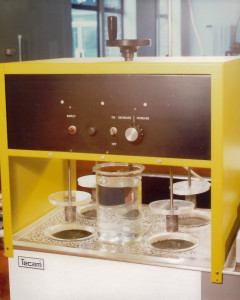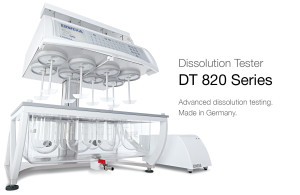It may come as a surprise to some to learn that the basic design principals of all dissolution testers has remained essentially the same for nearly 50 years.
There have been alterations of course, although few (if any) are made without first complying with or seeking approval of the various pharmacopeia standardisation rules and regulations that almost every single manufacture of dissolution testers adheres to. This adherence results in all new alterations to the design of a single dissolution tester being mandatorily applicable to all new makes and models of dissolution testers thereafter around the world.
The reasons for this predominantly centre on the concept of global compliance and formality. The ensuring commitment to produce and analyse pharmaceutical drugs to the same standard, manufacturing process and testing across the world. This in turn guarantees that all dissolution testers produce the same results, carried out in the same way, wherever they operate. This then ensures the drugs being verified in the dissolution testers are tried to the same required standard irrespective of geographic location and ownership (in theory).
Despite the core blueprint remaining very constant within each stage of the evolution of the design and manufacturing of dissolution testers, the bodies, or ‘outer shells’ have been allowed some degree of flexibility throughout the passage of time. As long as the shafts and attachments perform the same job, to the same specifications when inside the test stations, other elements around this rather inflexible environment do exhibit some variety between brands. This allows for a rather interesting feeling of familiarity when looking at how dissolution testers have progressed through history. Indeed, as the title of this article suggests – they are the same but, different.
We thought it would be curious to highlight how the design of dissolution testers has changed since the 1960’s while also making clear how similar they still are too. The first image below is a rather glorious look back to a QC lab some 50 odd years ago, showing dissolution rigs in their infancy. The second image is of the ERWEKA DT 820, which is a new range of dissolution baths released in 2015. As you can see, although strikingly different, they exhibit strikingly similar design qualities too.


Naturally the DT 820 is a far better, more modern and robustly designed system, with integrated computers and enhanced capabilities that were scarcely even thought of in the 19060’s. But, despite the advances and numerous benefits to owning new dissolution testers, it’s none-the-less humbling to see how a good, well supported design concept can stand the test of time. Here’s to the next 50 years!
Interested in finding out more about dissolution testers ?
If you would like to see our own beautiful range of sparklingly new, impressively designed and unquestionably reliable dissolution testers, please feel free to click here and take a look. We supply and service all makes and models of ERWEKA dissolution testers to many leading pharmaceutical, academic and research institutions across the UK.